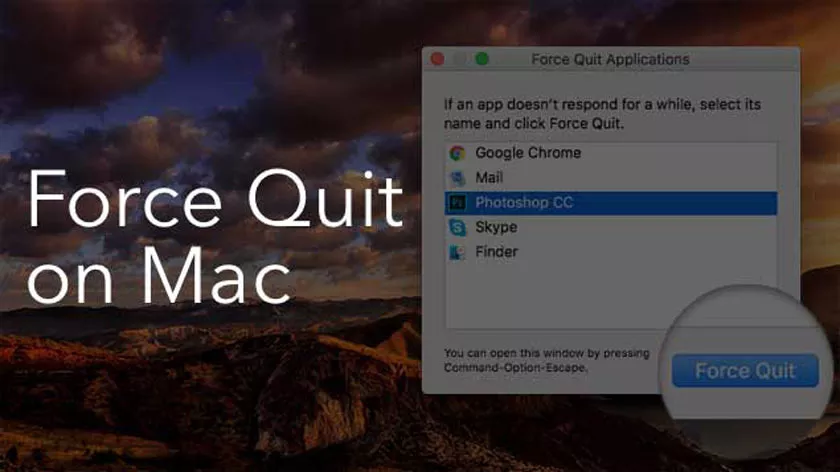Quit Programs on Mac: Forcing an application to quit on Mac is a very simple process and can be done in a lot of different ways. In this article I want to talk about precisely this, about the different ways to force the exit of a program in macOS when it hangs for any reason.

In the case of Windows, the most common is to use the key combination Control + Alt + Delete. It will surely sound to you if before using Mac you were a user of a PC with the Redmond operating system.
InmacOSthere is a very similar alternative, although it is not the only one available as you will see in the following lines.
How to Quit Programs on Mac
Perhaps on Mac it is not so common for applications to hang, but of course they are not failsafe and can hang at any time.Apple is aware of this and that is why it has integrated several different options in the operating system to force the closure of a program that does not respond for any reason.
Here are all the methods available to do it.
From the Dock
It is perhaps the easiest method you can access and one of the most used by macOS users. To force the closing of a program from the dock, simply click on its icon with the rightmouse buttonand select the Force exit option.
This option will appear if the program does not respond. In case it does not appear directly, when the secondary menu is displayed you mustpress the Alt key onthe keyboard and you will see how the Exit option changes to Force exit, on which you must click.
From the Apple icon
The second option is to use the menu bar, more specifically the icon with the Apple logo, to access theForce Exit window.
To do this you just have to click on the mentioned icon and then select the Force exit option. When you do this, a new window will be displayed in which you can select the application or applications (hold down the Command key while clicking on each program you want to select) that you need to close and click on the Force exit button.
Also, there is a variant that allows you to close the active application. To do this, you must take the previous steps and once you have the Apple icon menu displayed, press the Shift key and the option Force Exit from XXX will appear (where XXX will be the name of the active program, that is, the one you have selected in the Dock).
With a keyboard shortcut
This option isvery similar to the previous one, with the difference that the Force application exit window is displayed with a keyboard shortcut instead of the mouse.
The shortcut is Command + Option (Alt) + Esc. When pressing this combination, the mentioned window will automatically appear and you will only have to select the programs you want to close. Finally, click on the Force exit button and they will be closed instantly.
With Activity Monitor
Activity Monitor could be said to be the equivalent of Windows Task Manager and from it it is also possible to close an application that does not respond.
To access this tool you can search for it from Spotlight (the magnifying glass that appears in the upper right corner of the screen, inside the menu bar) or access it from Applications – Utilities.
Once inside the tool, you will see alist with all the processesrunning on the computer. At this point you just have to find the one you need to close or force the closure and select it by clicking on it. Once selected, click on the icon with the X symbol in the upper left corner of the application window and it will close completely on the fly.
Using Terminal
Perhaps this method is a bit more messy, since the entire interface is in text mode and there is no visual aid. In any case it is good to know it in case the other options fail (something unlikely).
The first thing you must do to use this option is to open a Terminal window. To do this you can type Terminal in Spotlight (the magnifying glass that appears in the macOS menu bar, just in the upper right corner of the screen) or access Applications – Utilities.
Once open, type theTOP command and press the Enter key. You will see a list with all the applications running along with data such as memory consumption, CPU usage, etc, etc …
In this list you should look for the program that is giving you problems in the COMMAND column. It may not appear with the name you know it with, but with some kind of abbreviation or similar. Find the one that most resembles and write down the corresponding PID (the number that appears in the column on your left).
Nowpress the letter Q to exit the listof running applications and type the kill command followed by the PID you have noted. For example:
kill 834
After typing the command, hit the Enter key and the task will run instantly, completely closing the application that is failing.
